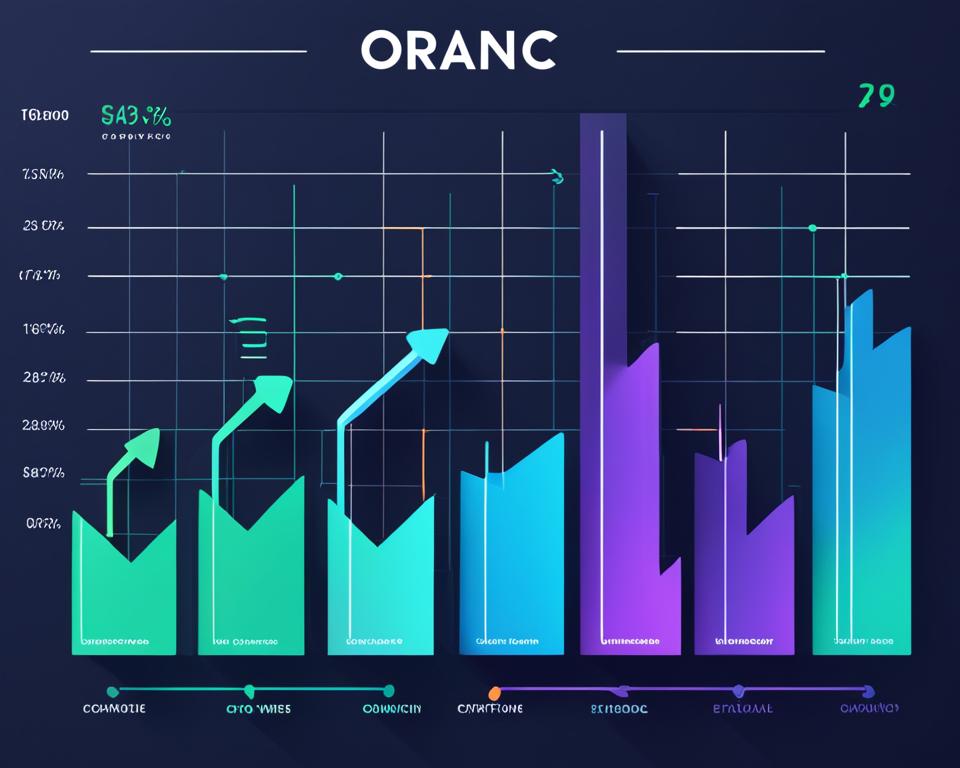
Stablecoins: User Trend or Bot Volume Game?
Welcome to our exploration of stablecoins in the crypto ecosystem. In this article, we’ll investigate whether stablecoins are genuinely trending among crypto users or if the market is being influenced by trading bots. We’ll delve into the basics of stablecoins, their key features, and how they compare to other cryptocurrencies. By analyzing their growth and adoption across various markets, we aim to gain insights into their popularity and usage. Additionally, we’ll discuss the role of bots in crypto markets and explore the diverse use cases of stablecoins beyond being trading tools. Through quantitative analysis and qualitative insights, we’ll uncover stablecoin user behavior and identify potential patterns of bot manipulation. Let’s determine whether stablecoins are truly a user trend or just a game of bot volume.
Understanding Stablecoins in the Crypto Ecosystem
Stablecoins have emerged as a key component of the crypto ecosystem, providing a solution to the volatility that plagues other cryptocurrencies like Bitcoin and Ethereum. These digital assets are designed to maintain a stable value by pegging them to external assets, such as fiat currency or commodities.
The Basics of Stablecoins and Their Purpose
Stablecoins serve a crucial purpose in the cryptocurrency market by offering stability and predictable value to users. Unlike traditional cryptocurrencies that can experience dramatic price fluctuations, stablecoins aim to mitigate this volatility and provide a reliable store of value for users.
The primary goal of stablecoins is to bridge the gap between the decentralized nature of cryptocurrencies and the stability of traditional fiat currency. This allows users to retain the benefits of blockchain technology while minimizing the risks associated with price volatility.
Key Features That Define Stablecoins
Stablecoins possess several key features that differentiate them from other cryptocurrencies:
- Price Stability: Stablecoins are designed to maintain a stable value that closely tracks an external asset, typically a fiat currency. This stability is achieved through various mechanisms, ensuring that the value of stablecoins remains relatively constant over time.
- Collateralization: Most stablecoins are backed by collateral, which can include fiat currency reserves, cryptocurrencies, or other assets. This collateral provides a safety net for the stablecoin’s value and serves as a guarantee for users.
- Redeemability: Stablecoins offer the ability to be redeemed for their underlying assets. Users can typically exchange their stablecoins for the asset they are pegged to on a one-to-one basis, ensuring transparency and trust.
Comparing Stablecoins to Other Cryptocurrencies
When comparing stablecoins to other cryptocurrencies, several factors come into play:
- Price Volatility: While cryptocurrencies like Bitcoin and Ethereum are known for their price volatility, stablecoins provide a stable alternative that appeals to users seeking price predictability.
- Use Cases: Stablecoins have unique use cases that differentiate them from other cryptocurrencies. They are commonly used for everyday transactions, remittances, and as a stable trading pair for volatile cryptocurrencies.
- Adoption Rates: Stablecoins have gained significant adoption in the market due to their stability and versatility. Their widespread use in various industries and trading platforms has contributed to their growing prominence.
Are Crypto Users Really Into Stablecoins? Or Is It Just Bots Pumping Volumes?
In this section, we will delve into the reality of stablecoin adoption among crypto users and question whether the market is being influenced by trading bots inflating volumes. It is essential to understand the level of genuine interest and participation by crypto users in stablecoins and determine the extent of bot involvement in artificially boosting the market.
To assess the adoption of stablecoins, we will examine data and statistics that provide insights into the behavior and preferences of crypto users. By analyzing their trading patterns and volumes, we can gain valuable insights into the potential role of bots in the market’s dynamics. It is crucial to distinguish between genuine user interest and bot manipulation to gauge the true adoption of stablecoins.
In addition to quantitative analysis, qualitative research through interviews and surveys with crypto users will be conducted to gather their perspectives, motivations, and usage of stablecoins. These qualitative insights will help us gain a deeper understanding of the factors driving stablecoin adoption and differentiate between user-driven trends and bots’ influence.
By comparing user behavior with bot manipulation, we aim to shed light on the extent of genuine user interest in stablecoins. This analysis will provide valuable insights into the dynamics between crypto users and trading bots, enabling us to better understand the true adoption of stablecoins in the crypto market.
Tracing the Growth: Stablecoins Adoption Across Markets
As stablecoins gain traction in the crypto ecosystem, it’s important to understand their adoption and usage across different markets. By examining historical data and market trends, we can map the rise in stablecoin usage and identify the factors driving their adoption.
Mapping the Rise in Stablecoin Usage
Stablecoins have experienced significant growth in recent years, with their adoption steadily increasing. By analyzing the historical usage patterns, we can gain insights into the trajectory of stablecoin adoption and the key developments that have shaped their popularity.
“The rise of stablecoins can be attributed to their ability to address the volatility concerns associated with other cryptocurrencies, making them an attractive option for users seeking stability in their digital transactions.”
Understanding the growth of stablecoin usage is crucial in assessing their value proposition and impact on the broader crypto ecosystem. By examining transaction volumes, market capitalization, and user activity, we can gain valuable insights into the market dynamics of stablecoins.
Stablecoins Adoption Rates Among Users Versus Traders
It is essential to differentiate between the adoption rates of stablecoins among users and traders to gain a comprehensive understanding of their overall market usage. By comparing the preferences and usage patterns of these two groups, we can identify the extent of their adoption and the benefits that each group derives from stablecoins.
Users are increasingly turning to stablecoins as a means of storing value, making transactions, and accessing decentralized finance (DeFi) applications. Traders, on the other hand, utilize stablecoins for liquidity provision, arbitrage opportunities, and as a hedge against volatile cryptocurrencies.
- The adoption rates among users and traders provide valuable insights into the role and relevance of stablecoins in different segments of the market.
- By understanding the varying adoption rates, we can better comprehend the demand for stablecoins and their impact on the overall crypto market.
Regional Variations in Stablecoins Popularity
The popularity and adoption of stablecoins can vary significantly across different regions. Factors such as economic conditions, regulatory environments, and financial infrastructure influence the preferences and usage patterns of stablecoins in specific regions.
By examining regional variations in stablecoin popularity, we can identify trends and patterns that shed light on the factors driving adoption. This understanding can help stakeholders develop targeted strategies to maximize the potential of stablecoin adoption in specific regions.
“In regions with unstable currencies or limited access to traditional banking services, the adoption of stablecoins as a reliable and accessible digital asset has been substantial.”
Market research reports and industry data provide valuable insights into regional variations in stablecoin popularity. By analyzing this data, we can gain a comprehensive understanding of stablecoin adoption on a global scale.
The Role of Bots in Crypto Markets: Beyond the Hype
In this section, we will explore the role of bots in crypto markets beyond the hype and speculation.
Trading bots, also known as crypto market bots, are automated computer programs that execute trades on behalf of users by analyzing market data and implementing predefined strategies. These bots operate 24/7, allowing traders to take advantage of opportunities in the fast-paced crypto market.

Trading bots have a significant impact on market liquidity by increasing trading volumes and providing continuous market participation. With their ability to execute trades at high speeds and react to market conditions, bots can contribute to the overall efficiency of the crypto market.
However, it’s important to consider the potential drawbacks of bots in the crypto market. Bots can exacerbate market volatility due to their algorithmic trading strategies, which can amplify price swings. This heightened volatility may lead to potential risks for traders and investors.
Market manipulation is another concern associated with the use of bots. While not all bots engage in manipulative practices, there have been instances where bots have been used to artificially inflate trading volumes and create misleading market patterns.
To better understand the impact of bots on crypto market trends and stability, we will explore real-life examples and case studies. By analyzing these cases, we can gain insights into the influence bots have on price movements and market behavior.
Shedding Light on Stablecoin Use Cases: More Than Just Trading Tools
Stablecoins have emerged as valuable assets in the crypto ecosystem, offering more than just a tool for trading. In this section, we will explore the diverse use cases of stablecoins and their impact on various sectors.
Stablecoins in Remittances and Payment Systems
The stability and efficiency of stablecoins make them ideal for remittance services and payment systems. By using stablecoins, individuals and businesses can benefit from lower fees and faster transactions compared to traditional banking systems. These advantages not only make cross-border transactions more accessible but also facilitate financial inclusion for underserved populations.
Using Stablecoins for Lending and Yield Farming
Stablecoins have also revolutionized the lending landscape by providing borrowers with easier access to credit and lenders with attractive interest rates. With stablecoins acting as collateral, borrowers can obtain loans without selling their digital assets, allowing them to participate in the crypto market while accessing liquidity. Additionally, stablecoins play a vital role in yield farming, enabling users to earn passive income by lending their stablecoins in decentralized finance (DeFi) platforms.
Stablecoins and Their Integration in Decentralized Finance (DeFi)
Decentralized finance (DeFi) platforms have gained significant traction in recent years, offering innovative financial services built on blockchain technology. Stablecoins play a crucial role in this ecosystem, facilitating seamless peer-to-peer lending, decentralized exchanges, and other DeFi applications. The stability and ease of use of stablecoins make them a preferred choice for users seeking reliable and efficient financial solutions within the decentralized landscape.
In conclusion, stablecoins have diversified their use cases beyond being mere trading tools. Their applications in remittances, payment systems, lending, and DeFi have demonstrated their potential to revolutionize traditional financial systems. As the crypto market continues to evolve, stablecoins will likely play an increasingly important role in reshaping the way we transact and interact with digital assets.
Analyzing the Data: Stablecoin Users Analysis Vs. Bots Manipulation
In order to gain deeper insights into the dynamics of stablecoin usage and determine the extent of bots manipulation in the crypto market, a comprehensive analysis of quantitative data and qualitative user behavior studies is necessary.
Quantitative Analysis of Stablecoin Transactions
Through quantitative analysis, we can assess various aspects of stablecoin usage, such as transaction volume, frequency, and patterns of user activity. By examining the data, we can identify trends and patterns that reveal the true extent of stablecoin adoption among crypto users.
Using advanced data analytics tools, researchers are able to analyze large datasets comprising stablecoin transactions. This enables them to uncover valuable insights that shed light on user behavior, trading patterns, and the overall market trends.
With quantitative analysis, we can quantify the level of stablecoin users’ engagement, identify any anomalies or irregularities in transaction patterns, and distinguish between genuine user activity and potential bot manipulation.
Qualitative Insights from User Behavior Studies
In addition to quantitative analysis, qualitative insights from user behavior studies provide a deeper understanding of the motivations, preferences, and perceptions of stablecoin users. By conducting interviews and surveys, researchers can gather valuable firsthand information directly from the users themselves.
Through these qualitative studies, researchers can gain insights into the reasons why users choose to use stablecoins, their expectations and experiences, and their perceptions of stablecoins compared to other cryptocurrencies. This information helps in understanding the real-world use cases and the impact of stablecoins on users’ financial activities.
Qualitative insights combined with quantitative data allows for a holistic assessment of stablecoin user behavior and helps mitigate potential biases that arise from analyzing data in isolation.
Spotting Patterns of Bots Manipulation in Crypto
Spotting patterns of bots manipulation in the crypto market involves careful analysis of trading patterns, volumes, and anomalies that may indicate artificial bot activity. By examining the data for irregularities or suspicious patterns, researchers can identify potential instances of bots manipulating the market.
Researchers rely on sophisticated algorithms and anomaly detection techniques to identify abnormal trading patterns that are often associated with bots manipulation. By comparing these patterns to established benchmarks and market trends, they can determine the extent of bot involvement and assess its impact on stablecoin prices and trading volumes.
By studying both quantitative data and qualitative insights, researchers can gain a comprehensive understanding of stablecoin usage and the potential influence of bots in the crypto market.

Overall, the analysis of stablecoin user behavior and the detection of bots manipulation contribute to a better understanding of the crypto market trends, enabling researchers and industry participants to make informed decisions and develop strategies that align with the needs and expectations of users.
Conclusion
After a thorough analysis of stablecoins in the crypto market, we have gained valuable insights into their adoption and the role of bots. Our findings indicate that stablecoins are indeed experiencing significant user interest, suggesting they are more than just a game of bot volume.
Through quantitative analysis of stablecoin transactions, we observed a consistent growth in their usage across different markets. This indicates a genuine demand for stable value cryptocurrencies among users. Additionally, qualitative insights from user behavior studies further support this notion, revealing a range of use cases beyond trading.
While bots play a role in the crypto market, our analysis indicates that stablecoin adoption is driven by user demand rather than artificial inflation. By examining trading patterns and volumes, we identified patterns consistent with genuine user interest. The integration of stablecoins in remittances, payment systems, lending, and decentralized finance (DeFi) further signifies their practical utility beyond trading tools.
In conclusion, stablecoins have emerged as a user trend in the crypto ecosystem. Their growth and adoption among users showcase their value as stable value cryptocurrencies. While bots can influence market dynamics, the overall adoption of stablecoins is driven by genuine user demand and their integration into various financial systems. As the crypto market evolves, stablecoins are poised to play a significant role in enhancing financial stability and expanding the utility of blockchain technology.














